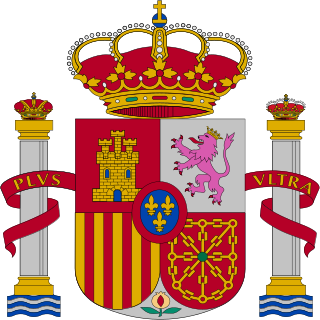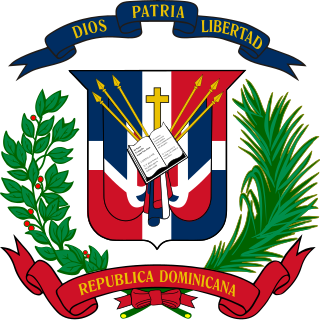
An election is a formal group decision-making process by which a population chooses an individual or multiple individuals to hold public office.

The Prussian three-class franchise was an indirect electoral system used from 1848 until 1918 in the Kingdom of Prussia and for shorter periods in other German states. Voters were grouped by district into three classes, with the total tax payments in each class equal. Those who paid the most in taxes formed the first class, followed by the next highest in the second, with those who paid the least in the third. Voters in each class separately elected one third of the electors who in turn voted for the representatives. Voting was not secret. The franchise was a form of apportionment by economic class rather than geographic area or population.

Elections in Chile are held nationwide, including the presidency, parliament, regional offices, and municipal positions. Chilean citizens and foreign residents with legal residency of at least five years, who are 18 years or older on election day, are eligible to vote. Previously, voting was voluntary, but since 2023, it has become compulsory.

Elections in Spain encompass four different types: general elections, regional elections, local elections, and elections to the European Parliament. General elections and regional elections are typically conducted at the conclusion of the national or regional legislative mandate, which usually spans four years since the previous election. However, early elections can be called in certain circumstances. On the other hand, local council elections and elections to the European Parliament follow fixed dates, although some local government bodies, such as provincial councils, are not directly elected. In most elections, a party-list proportional representation (PR) system is employed, while the Senate utilizes the plurality system.
Under the Iraqi constitution of 1925, Iraq was a constitutional monarchy, with a bicameral legislature consisting of an elected House of Representatives and an appointed Senate. The lower house was elected every four years by manhood suffrage. The first Parliament met in 1925. Ten general elections were held before the overthrow of the monarchy in 1958.

The Dominican Republic is a unitary state with elected officials at the national and local levels. On a national level, head of state, the President, is elected directly by the people. The national legislature, the Congress of the Republic, is divided into two chambers: the Chamber of Deputies and the Senate. There are also elected offices at the local level. It is estimated that across the whole country, over four thousand offices are filled in every electoral cycle.
Elections in Serbia are mandated by the Constitution and legislation. The President of the Republic, National Assembly, provincial (Vojvodina) and local assemblies are all elective offices. Since 1990, twelve presidential, fourteen parliamentary and ten provincial elections were held.

Voting in New Zealand was introduced after colonisation by Britain. The first New Zealand Constitution Act was passed in 1852, and the first parliamentary elections were held the following year.
Armenian National Assembly was the governing body of the Armenian millet in the Ottoman Empire, established by the Armenian National Constitution of 1863.

Voter turnout in US elections is the total number of votes cast by the voting age population (VAP), or more recently, the voting eligible population (VEP), divided by the entire voting eligible population. It is usually displayed as a percentage, showing which percentage of eligible voters actually voted.

The election of the president and for vice president of the United States is an indirect election in which citizens of the United States who are registered to vote in one of the fifty U.S. states or in Washington, D.C., cast ballots not directly for those offices, but instead for members of the Electoral College. These electors then cast direct votes, known as electoral votes, for president and for vice president. The candidate who receives an absolute majority of electoral votes is then elected to that office. If no candidate receives an absolute majority of the votes for president, the House of Representatives elects the president; likewise if no one receives an absolute majority of the votes for vice president, then the Senate elects the vice president.

The electoral system of the Soviet Union was varying over time, being based upon Chapter XIII of the provisional Fundamental Law of 1922, articles 9 and 10 of the 1924 Constitution and Chapter XI of the 1936 Constitution, with the electoral laws enacted in conformity with those. The Constitution and laws applied to elections in all Soviets, from the Supreme Soviet of the Soviet Union, the Union republics and autonomous republics, through to regions, districts and towns. Voting was claimed to be secret and direct with universal suffrage. However, in practice, between 1936 and 1989, voters could vote against candidates preselected by the Communist Party only by spoiling their ballots, or by voting against the only candidate, whereas votes for the party candidates could be cast simply by submitting a blank ballot. A person would be given a ballot by a clerk, and could immediately walk to the ballot box, and while there were booths in which one could strike the candidates they voted against off the ballot, this was easy to record and was not commonly done by voters.
Nomination rules in elections regulate the conditions under which a candidate or political party is entitled to stand for election. The right to stand for election, right to be a candidate or passive suffrage is one part of free and fair elections. Passive suffrage is distinct from active suffrage, the right to vote. The criteria to stand as a candidate depends on the individual legal system. They may include the age of a candidate, citizenship, endorsement by a political party and profession. Laws' restrictions, such as competence or moral aptitude, can be used in a discriminatory manner. Restrictive and discriminatory nomination rules can impact the civil rights of candidates, political parties, and voters.

Early general elections were held in the Ottoman Empire in April 1912. The ruling Committee of Union and Progress won 269 of the 275 seats in the Chamber of Deputies, whilst the opposition Freedom and Accord Party only won six seats, a victory widely deemed fraudulent and won through intimidation.

General elections were held in November and December 1908 for all 288 seats of the Chamber of Deputies of the Ottoman Empire, following the Young Turk Revolution which established the Second Constitutional Era. They were the first elections contested by organised political parties.
General elections were held in the Ottoman Empire in 1914. The Committee of Union and Progress (CUP) was the only party to contest the elections, and the newly elected Chamber of Deputies convened for the first time in May.
The first general elections in the history of the Ottoman Empire were held in 1877.
General elections were held in the Ottoman Empire during the second half of 1877.

The 1995 Spanish local elections were held on Sunday, 28 May 1995, to elect all 65,869 councillors in the 8,067 municipalities of Spain and all 1,034 seats in 38 provincial deputations. The elections were held simultaneously with regional elections in thirteen autonomous communities, as well as local elections in the three foral deputations of the Basque Country and the ten island councils in the Balearic and Canary Islands.

The 1999 Spanish local elections were held on Sunday, 13 June 1999, to elect all 65,201 councillors in the 8,104 municipalities of Spain and all 1,034 seats in 38 provincial deputations. The elections were held simultaneously with regional elections in thirteen autonomous communities, as well as local elections in the three foral deputations of the Basque Country, the ten island councils in the Balearic and Canary Islands and the 1999 European Parliament election.












